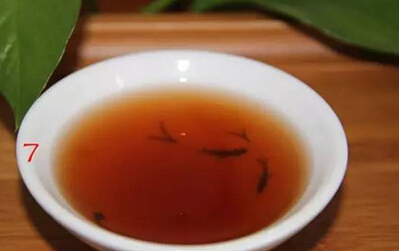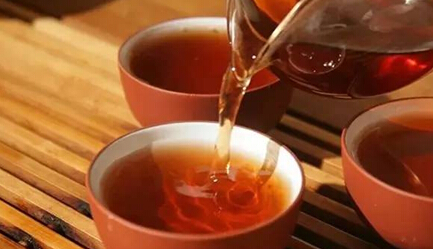Although ripe Pu-erh tea does not have the varying flavors of raw Pu-erh tea, it still has its unique taste. How to experience the "sweetness, fragrance, mellowness, thickness, and smoothness" of ripe Pu-erh tea? How to truly understand it?
[Main Text] The six main aspects of appreciating ripe Pu-erh tea are: thickness, smoothness, moistness, sweetness, purity, and aroma.
1. Thickness
The thickness of ripe Pu-erh is a very comfortable sensation. When the tea soup slides into the mouth and stimulates the taste buds, stirring it with the tongue allows you to fully feel its richness and fullness, which can also be understood as a viscous texture.
Thickness is not the same as the concentration of the tea soup. Thickness is related to the texture of Pu-erh tea. When the tea soup has a certain intensity and contains more dissolved substances, it will feel thicker and denser in taste.

2. Smoothness
Smoothness refers to the "oily sensation" of ripe tea, similar to the feeling of drinking chicken soup or rice porridge. Usually, a very smooth tea leaves a sensation of "a layer of oil" after drinking, which should be distinguished from the feeling of "easy to swallow because there is no bitterness."
In fact, smoothness is also related to the thickness of the tea soup. The mellower the tea soup, the more obvious the smoothness will be. When the tea soup enters the mouth, pauses for a moment, and flows smoothly through the throat to the stomach, it feels very round, pleasant, and natural, leaving a strong impression on the drinker. Poor-quality tea soup, on the other hand, may give a "choking" sensation.
3. Moistness
Good ripe Pu-erh tea moistens the throat immediately upon drinking, relieving any dryness. Experienced tea connoisseurs highly value this moistening characteristic. For ripe Pu-erh, this moistness is essential. High-quality ripe Pu-erh will always leave a feeling of warmth and comfort, like being bathed in a spring breeze.
After brewing three or four infusions, the tea soup should leave the throat feeling refreshed and moist, the mouth neither dry nor parched, and the stomach warm and comfortable—this is the manifestation of the moistness of ripe tea.

4. Sweetness
Sweetness is one of the simplest and most intuitive aspects of appreciating ripe tea. Good ripe tea exudes a sweet aroma even before the tea soup enters the mouth. Additionally, ripe tea has almost no bitterness, making the sweetness even more pronounced! As soon as the tea soup enters the mouth and touches the tongue, the sweetness is quickly felt, spreading throughout the mouth and lingering for a long time.
5. Purity
Purity is an important indicator of the craftsmanship of ripe tea fermentation. The hygiene of the fermentation environment, the correctness of the method, the appropriateness of the fermentation degree, and the ideal storage conditions can all be evaluated through the purity of the tea soup.
Tea soup with good purity tastes very clean and comfortable, making it acceptable even to those who do not particularly favor ripe tea. If there is any off-flavor, it indicates unhygienic conditions during production or contamination during storage.

6. Aroma
Different ingredients and blending methods bring different aromas, which is one of the charms of ripe tea. The pile-fermentation process inevitably gives new ripe tea a "fermentation odor," but skilled craftsmanship and strict production processes can reduce this smell to some extent. After two or three years of aging, the fermentation odor fades, revealing a fuller and rounder taste.
Aged aroma is the most basic fragrance of ripe tea. If stored properly, ripe tea that has aged for over five years will further develop, presenting richer aromas such as camphor, ginseng, medicinal, jujube, aged, or woody notes. However, this depends on the quality of the tea, the storage environment, and the passage of time. In other words, if the tea's raw materials are poor, no amount of aging will produce pleasant surprises.
Good ripe tea speaks for itself. In the antique trade, there is a term called "da kai men," meaning that the true essence of an antique is immediately apparent and requires no elaborate authentication. The same applies to tea. The physical and mental sensation of drinking good tea needs no flowery language to describe—it is a state of harmony between heaven and humanity, body and mind.